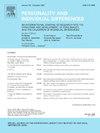爵士乐手和抖动:利用多维缩放技术探索情绪和唤醒维度
IF 3.5
2区 心理学
Q1 PSYCHOLOGY, SOCIAL
引用次数: 0
摘要
本研究利用多维标度(MDS)的情绪和唤醒的二维平面,试图更好地了解情绪的结构和情绪项目之间的关系。积极和消极情绪表(PANAS)是最常用的自我报告情绪测量方法,但因只包括高唤醒情绪而饱受批评。我们进行了一项主体间两部分实验研究。我们在网上招募了参与者(548 人),要求他们对两个目标词(愤怒:271 人;平静:277 人)中的一个词与 143 个情绪词之间的相似度进行评分。我们的研究结果为情绪和唤醒的二维平面提供了证据,表明在研究情绪时,所有四个象限都很重要。总体而言,本研究通过 MDS 分析发现,激活-唤醒情感理论得到了支持。情感词聚集在二维平面的所有四个象限,这表明情感测量必须涵盖所有四个象限。此外,我们的研究结果表明,PANAS 不包括正价/低激活象限的项目,然而,我们发现新发布的测量方法增加了项目的分散性,所有四个象限的项目都包括在内。本文讨论了该研究的局限性和未来发展方向。本文章由计算机程序翻译,如有差异,请以英文原文为准。
Jazz hands and jitters: Exploring valence and arousal dimensions with multidimensional scaling techniques
Utilizing the two-dimensional plane of valence and arousal with multi-dimensional scaling (MDS), the current study sought to better understand the structure of affect and the relationship between emotion items. The positive and negative affect schedule (PANAS) is the most frequently applied self-report measure of affect but has been criticized for only including high arousal emotions. A between-subjects, two-part experimental study was conducted. Participants (N = 548) were recruited online and asked to rate the similarity between one of two target words (anger: n = 271; calm: n = 277) and 143 emotion words. Our results provided evidence for the two-dimensional plane of valence and arousal, indicating that all four quadrants are important when studying affect. Overall, the current study found support for the activation-arousal theory of affectivity with MDS analyses. Emotion words clustered in all four quadrants of the two-dimensional plane, demonstrating the necessity of an affect measure that encompasses all four quadrants. Furthermore, our results demonstrated that the PANAS does not include items in the positive valence/low activation quadrant, however, a newly published measure was found to have increased item dispersion, with items included in all four quadrants of affect. Limitations and proposed future directions are discussed.
求助全文
通过发布文献求助,成功后即可免费获取论文全文。
去求助
来源期刊

Personality and Individual Differences
PSYCHOLOGY, SOCIAL-
CiteScore
8.50
自引率
4.70%
发文量
577
审稿时长
41 days
期刊介绍:
Personality and Individual Differences is devoted to the publication of articles (experimental, theoretical, review) which aim to integrate as far as possible the major factors of personality with empirical paradigms from experimental, physiological, animal, clinical, educational, criminological or industrial psychology or to seek an explanation for the causes and major determinants of individual differences in concepts derived from these disciplines. The editors are concerned with both genetic and environmental causes, and they are particularly interested in possible interaction effects.
 求助内容:
求助内容: 应助结果提醒方式:
应助结果提醒方式:


